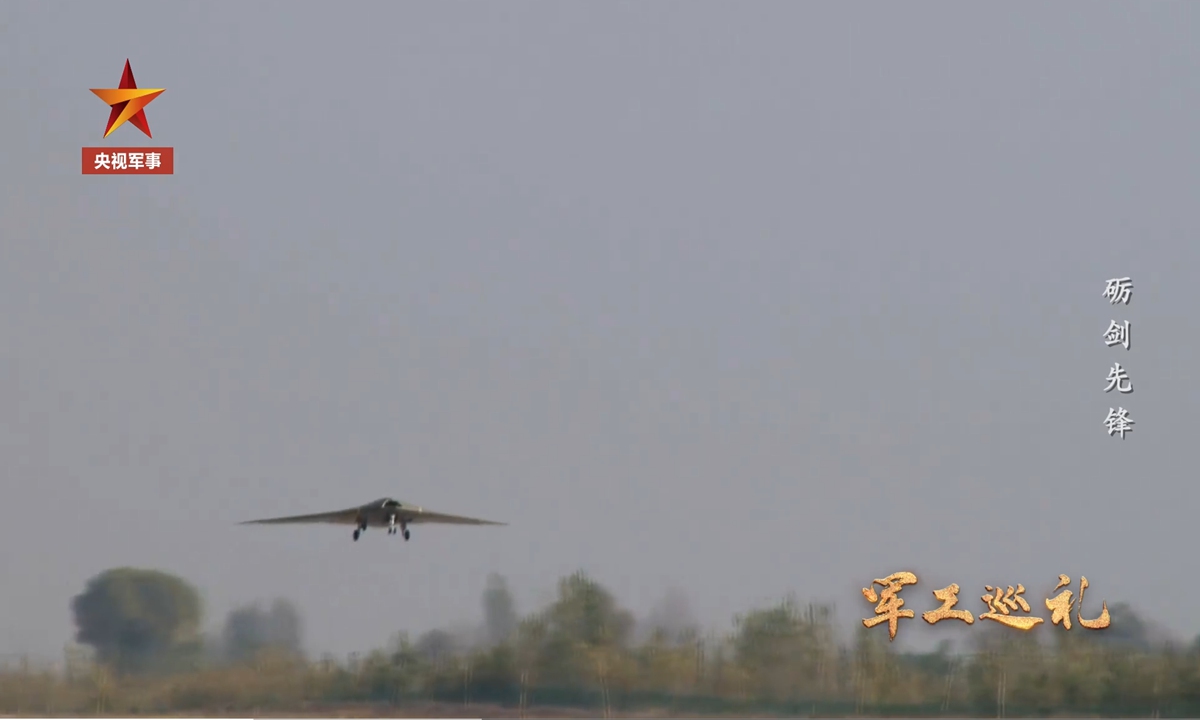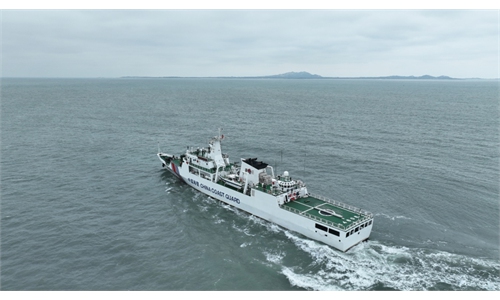
China's Sky Hawk stealth drone conducts its first test flight in November 2017. Photo: Screenshot from China Central Television
China's Sky Hawk unmanned flying vehicle (UAV) is scheduled to conduct outdoors tests soon after some of its main parameters have been upgraded. Chinese experts said on Tuesday that the flying wing-configured drone is expected to play major roles in reconnaissance and attack missions.
Developed by the No.3 Research Institute under the China Aerospace Science and Industry Corporation (CASIC), the Sky Hawk is a type of long endurance stealth UAV with penetration reconnaissance capability thanks to its flying wing configuration, China Central Television (CCTV) reported on Monday.
The highly intelligent drone can complete takeoff, flight and landing fully autonomously, CCTV reported.
After about four years of development, the Sky Hawk reconnaissance UAV successfully conducted its maiden flight in November 2017, and after that, chief engineer Ma Hongzhong and his team continued to optimize and iterate the drone's performances, the CCTV report said.
The Sky Hawk was displayed across multiple editions of Airshow China since 2018, and Ma told the Global Times at the Airshow China 2022 that the stealth drone can either operate independently or cooperate with a UAV swarm and the WJ-700, another type of high-altitude, high-speed and long-endurance armed reconnaissance drone developed by the CASIC No.3 Research Institute.
An upgraded version of the Sky Hawk, which has enhanced stealth capability and improved endurance, will soon carry out outdoor tests, according to the CCTV report.
The flying wing design used on the Sky Hawk provides many benefits, including a smaller radar cross section that enables stealth, a higher lift-drag ratio that enables longer range, and that is why many countries, including China, the US and Russia, are developing drones in such configurations, a Chinese military expert who requested anonymity told the Global Times on Tuesday.
In addition to the Sky Hawk, China has also publicly displayed its flying wing drones such as the GJ-11 and the CH-7 stealth attack drones, observers said.
Drones in flying wing configurations have advantages in reconnaissance, attack, aerial refuel, electronic warfare and other important missions in modern warfare, the above-quoted expert said.
But the development of such aircraft is challenging because of the lack of vertical wings and other conventional rudders, and the flight control must be realized in some other ways, for example, the use of split brake rudders, differential thrust and sophisticated flight control software, the expert said.
That is why flying wing drones are considered advanced aircraft that only countries with advanced aviation and aerospace technologies have the capabilities to develop , the expert said.




